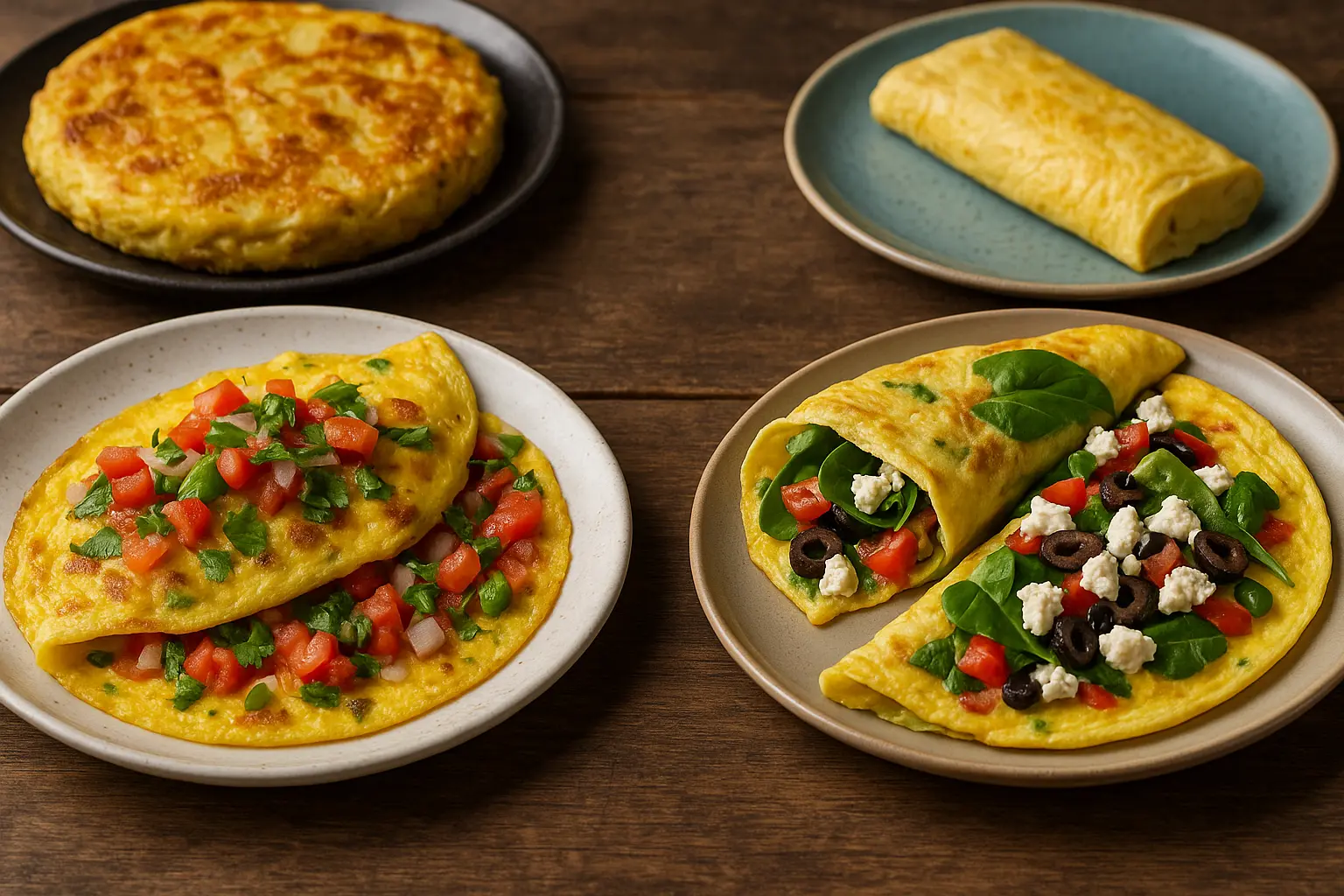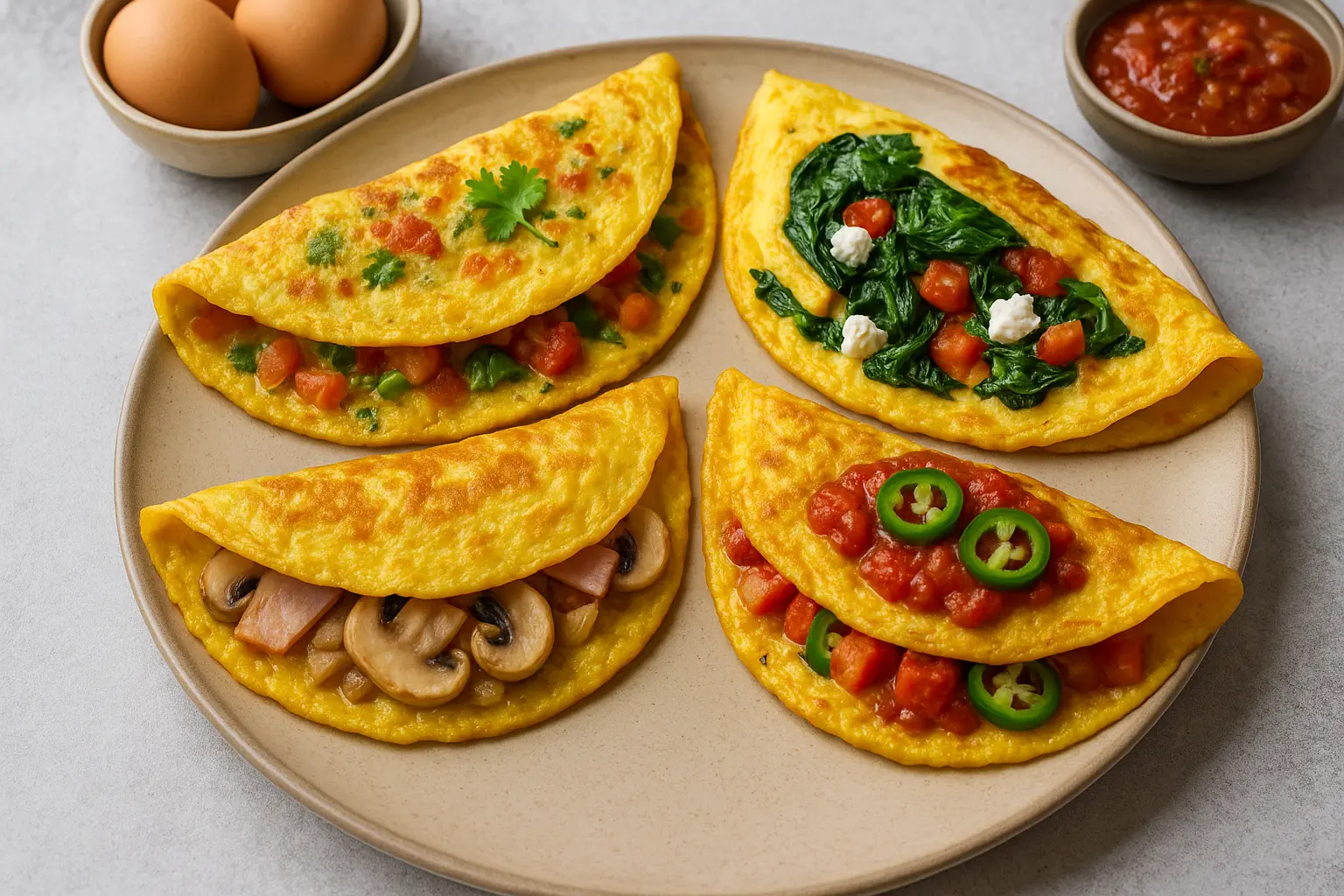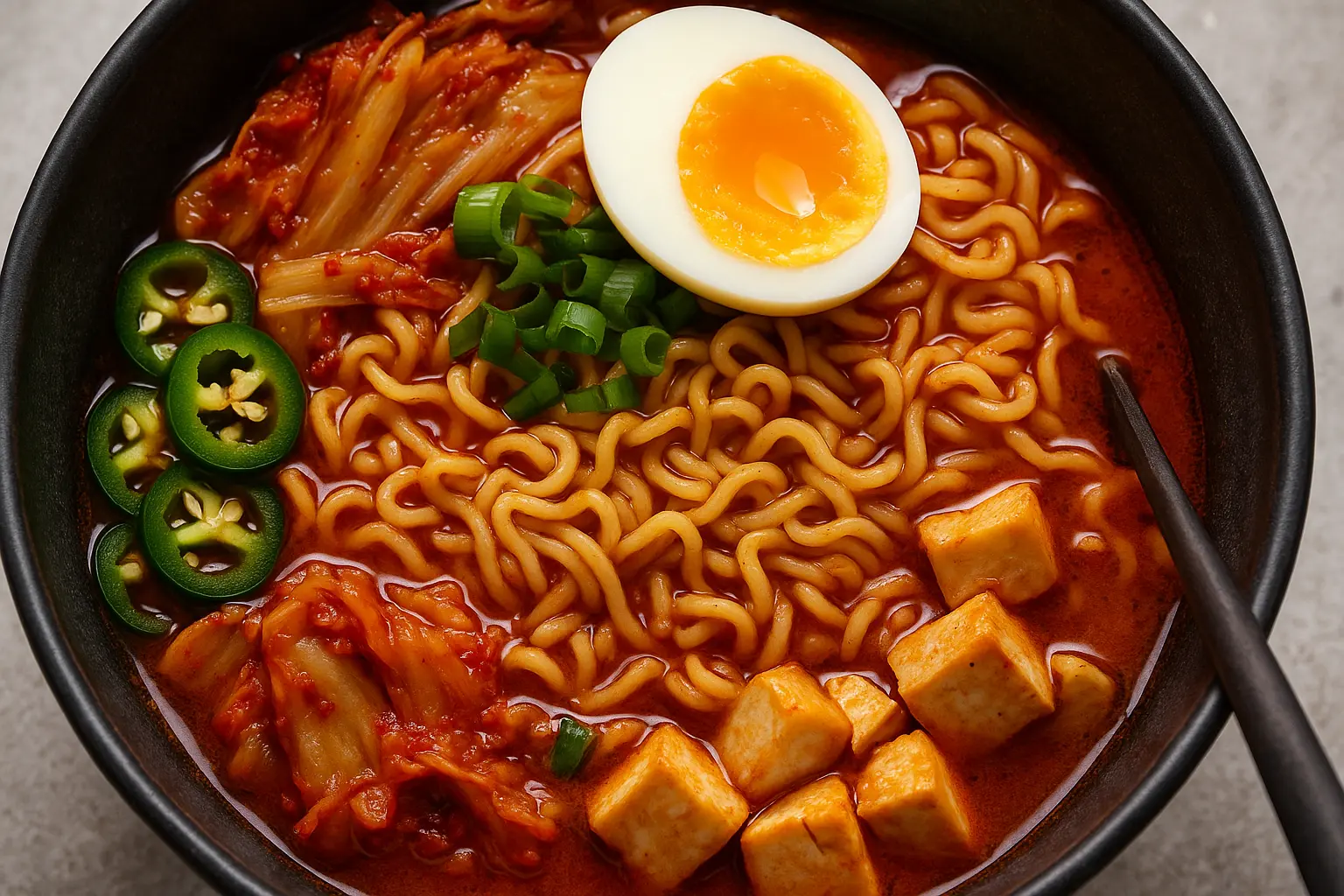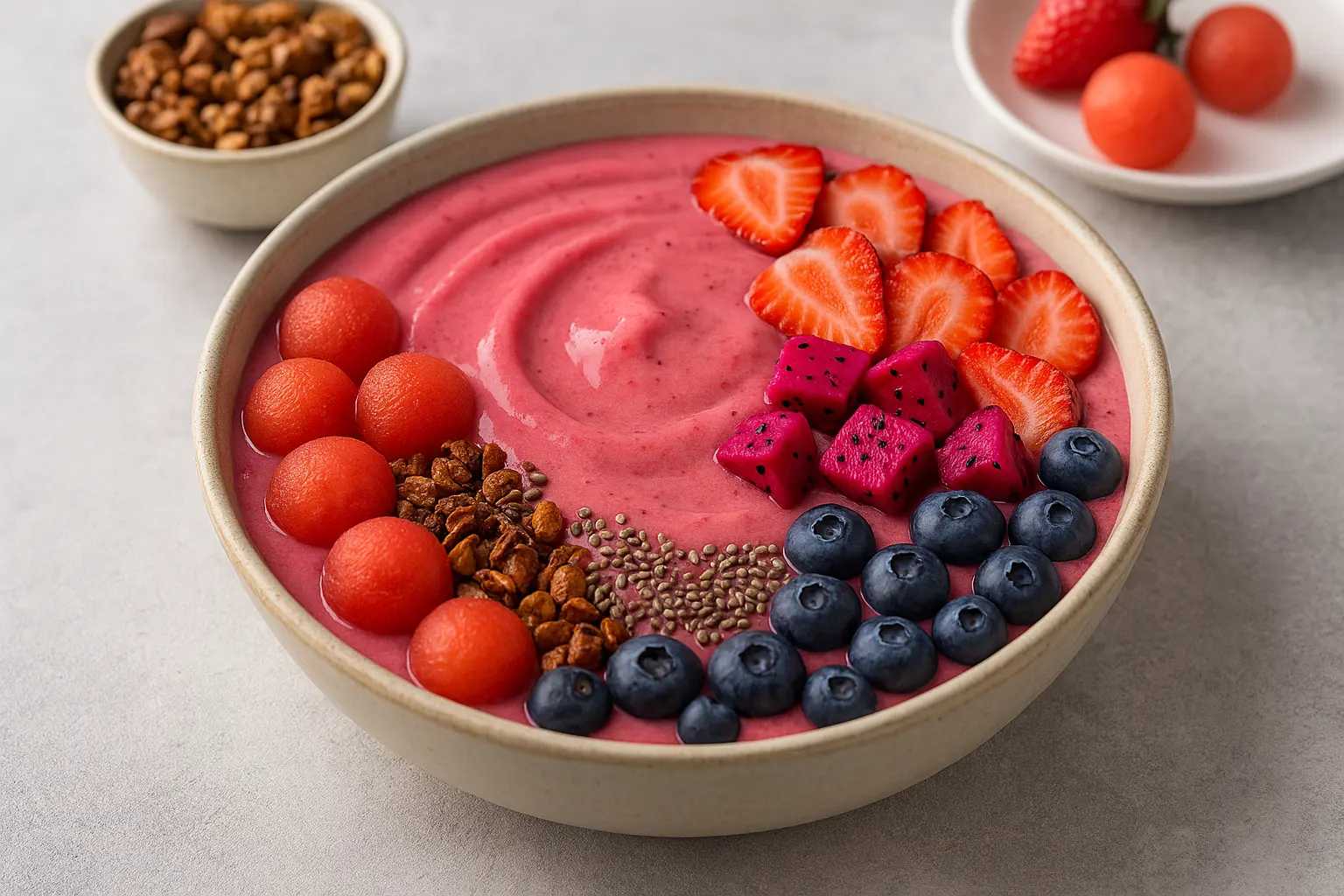Few dishes are as universally loved as the omelette. From the bustling street-side food stalls of Mumbai to the chic cafés of Paris, the humble omelette has taken countless forms. What makes it so special is its versatility: it’s quick, customizable, and most importantly, protein-rich. Eggs are naturally nutrient-dense, offering around 6 grams of protein each, making them a breakfast staple for people across the globe.
But omelettes aren’t limited to the classic cheese-and-onion version. Around the world, cultures have adapted this dish with spices, fillings, and cooking methods unique to their regions. Today, we’ll explore protein-packed omelette recipes infused with global flavors—from the bold spices of India to the light, delicate folds of Japanese tamagoyaki.

Why Choose Protein-Packed Omelettes?
Protein is an essential macronutrient that supports muscle repair, keeps you full longer, and stabilizes energy levels. Starting the day with a high-protein breakfast like an omelette can help:
Boost satiety: Protein keeps cravings at bay throughout the morning.
Support fitness goals: Great for muscle recovery and strength building.
Balance blood sugar: Reduces energy crashes compared to carb-heavy breakfasts.
Versatility: Pairs well with vegetables, lean meats, cheese, and global spices.
Adding globally inspired ingredients not only enhances the flavor profile but also increases the nutrient density—like antioxidants from herbs, fiber from vegetables, and omega-3s from fish.
Global Omelette Inspirations
1. Indian Masala Omelette
Highlights: Spicy, savory, packed with vegetables.
Protein Sources: Eggs + optional paneer or chicken.
Flavors: Onion, tomato, chili, turmeric, coriander.
Why it works: Bold spices add antioxidants and enhance digestion.
2. French Omelette
Highlights: Soft, silky, and lightly folded.
Protein Sources: Eggs + Gruyère or goat cheese.
Flavors: Butter, fresh herbs (parsley, chives).
Why it works: Minimal fillings keep it elegant yet nutrient-rich.
3. Spanish Tortilla (Tortilla Española)
Highlights: Thick and hearty, almost like a pie.
Protein Sources: Eggs + potatoes + onions.
Flavors: Olive oil, smoked paprika.
Why it works: Dense and filling—excellent for brunch or meal prep.
4. Japanese Tamagoyaki
Highlights: Rolled omelette with a hint of sweetness.
Protein Sources: Eggs + dashi stock + soy sauce.
Flavors: Balanced sweet and savory.
Why it works: Light yet protein-rich, popular in bento boxes.
5. Mediterranean Omelette
Highlights: Bright and fresh with veggies and cheese.
Protein Sources: Eggs + feta cheese + spinach.
Flavors: Olives, tomatoes, oregano.
Why it works: Heart-healthy fats from olive oil and feta.
6. Mexican Huevos a la Mexicana Omelette
Highlights: Bold and colorful with chili and salsa.
Protein Sources: Eggs + beans + optional chorizo.
Flavors: Jalapeños, tomato, onion, cilantro.
Why it works: Combines plant-based and animal protein for balance.
7. Middle Eastern Shakshuka-Inspired Omelette
Highlights: Egg cooked with tomato and spices.
Protein Sources: Eggs + chickpeas or labneh on the side.
Flavors: Harissa, cumin, bell peppers.
Why it works: Rich in fiber and flavor, hearty yet healthy.
Mastering the Base: The Perfect Omelette Technique
No matter the global twist, a few basic principles apply:
Whisk Well: Whipping eggs incorporates air for fluffiness.
Season Early: Add salt and pepper to the raw eggs for even distribution.
Control Heat: Medium-low heat prevents browning and keeps eggs tender.
Don’t Overfill: Too many fillings prevent even cooking.
Fold Gently: A light fold ensures a creamy texture.
Protein Boosting Add-Ins
To increase protein content without overwhelming flavor:
Cheese: Parmesan, feta, goat cheese.
Legumes: Black beans, chickpeas, lentils.
Meat: Chicken, smoked salmon, turkey strips.
Plant-Based: Tofu, tempeh crumbles.
Nuts & Seeds: Pumpkin seeds, hemp seeds for topping.
Meal Prep and Storage Tips
Cook a batch of omelettes, cool, and store in airtight containers.
Wrap in parchment and refrigerate for 3 days.
Reheat on a skillet or microwave with a splash of water.
Freeze Spanish tortilla slices for long-term storage.
Health and Dietary Adaptations
Vegetarian: Skip meats, use paneer, beans, or mushrooms.
Vegan: Swap eggs with chickpea flour “omelettes.”
Gluten-Free: Naturally gluten-free if avoiding wraps or bread sides.
Low-Carb/Keto: Use cheese, avocado, and leafy greens as fillings.
Sample Global Meal Plan (Omelette Edition)
Monday: Indian Masala Omelette with chai.
Tuesday: French omelette with herbs and whole-grain toast.
Wednesday: Spanish tortilla slice for brunch.
Thursday: Mediterranean omelette with olives and feta.
Friday: Mexican omelette with beans and salsa.
Saturday: Japanese tamagoyaki with rice.
Sunday: Shakshuka-style omelette with flatbread.
Conclusion
Omelettes are more than just a quick breakfast—they’re a culinary passport. By incorporating global flavors, you not only enrich your palate but also benefit from diverse nutrients. Whether you’re looking to fuel a workout, whip up a quick weekday breakfast, or serve a sophisticated brunch, protein-packed omelettes deliver every time.
Experiment with different fillings, adjust to your dietary preferences, and let your kitchen be the gateway to global flavors.
Leave a comment
Your email address will not be published. Required fields are marked *




















